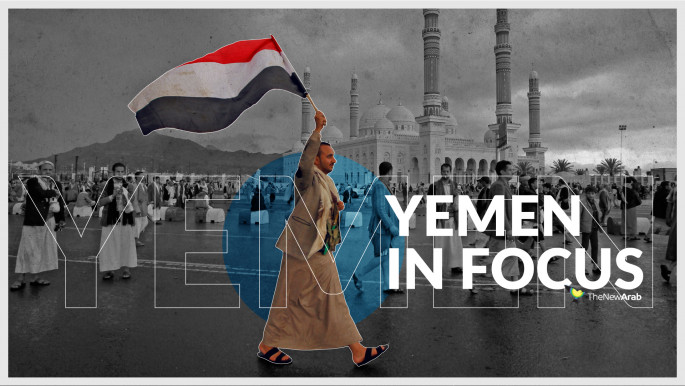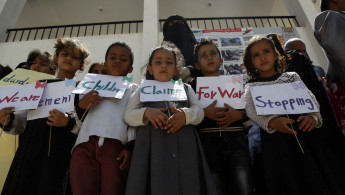Yemen in Focus: Who killed Sanaa's schoolchildren?
The most prominent of stories to stream out of Yemen this week was the devastating killing of 14 schoolchildren in the capital on Sunday, following what is thought to be Saudi-led coalition air raids on a residential neighbourhood that struck near a school in the capital.
A mass funeral was held for the young victims of the attack on Wednesday, which saw crowds of men spill into the streets of the capital carrying coffins draped with Yemeni flags.
Though the death of the schoolchildren remains undisputed, the cause of the deaths has proven to be a topic of debate.
The UN has blamed the deaths on an unknown blast that shook the capital despite witness accounts from the school on the day of the attack.
"It was almost lunchtime and students were in class. The blast shattered the windows and unleashed a burst of shrapnel and broken glass into the classrooms," said Geert Cappelaere, UNICEF's Middle East head, referring to the incident without clarifying whether it was an airstrike.
But Fatehiya Kahlani, principal of Al-Raei school, said: "Everyone was hysterical, some were crying and shouting in panic.
"The situation was horrible as the school population is 2,100," she added.
"Some girl students were killed and others were wounded and are in a hospital as a result of the missile strike. The school building was destroyed too."
Ali Ahmed, a wounded student, said, "We suddenly heard a fighter jet while we were at school. We then heard the first strike. We remained calm. Then came the second strike and then the third, which was the strongest of them all.
"The building was damaged and we were injured by broken glass. As the fourth airstrike came in, we panicked and ran home."
Footage shared online showed a large crowd of screaming students at the school watching in horror as plumes of smoke filled the air on Sunday.
While all sides in the war stand accused of failing to protect civilians, the Saudi-led coalition has drawn particularly harsh condemnation from international rights groups over civilian deaths.
It was added to a UN blacklist in 2017 for the killing and maiming of children.
The Saudi-led coalition has regularly targeted schools, hospitals, wedding parties and even funerals, prompting international uproar – though little has been done to hold it to account.
But this has done little to dent its conscience, as shown in our next story.
Ramadan Aid
This week, Saudi Arabia and the UAE, both of which lead the military coalition in Yemen, offered $200 million in aid to the country in honour of the the holy Muslim fasting month of Ramadan, due to start in early May.
The donation, announced simultaneously in Riyadh and Abu Dhabi, is part of a $500 million aid package announced by the allies in November to tackle widespread hunger and disease in the war-torn country, where more thousands have died since the war escalated with their military intervention in March 2015.
Officials in both countries said the Ramadan aid will be split between various UN agencies, including the World Food Programme, the children's agency UNICEF and the World Health Organisation.
"Saudi Arabia and United Arab Emirates are keen to implement an urgent programme with strategic partners – particularly WFP, UNICEF and WHO – to mitigate the situation of malnutrition... in Yemen and help to avert famine and the epidemic diseases associated with famine," the King Salman Humanitarian Aid and Relief Centre said in a statement.
More news from Yemen, same time, same place – next week.
Sana Uqba is a journalist at The New Arab.
Follow her on Twitter: @Sanasiino
Yemen In Focus is a new, regular feature from The New Arab.



